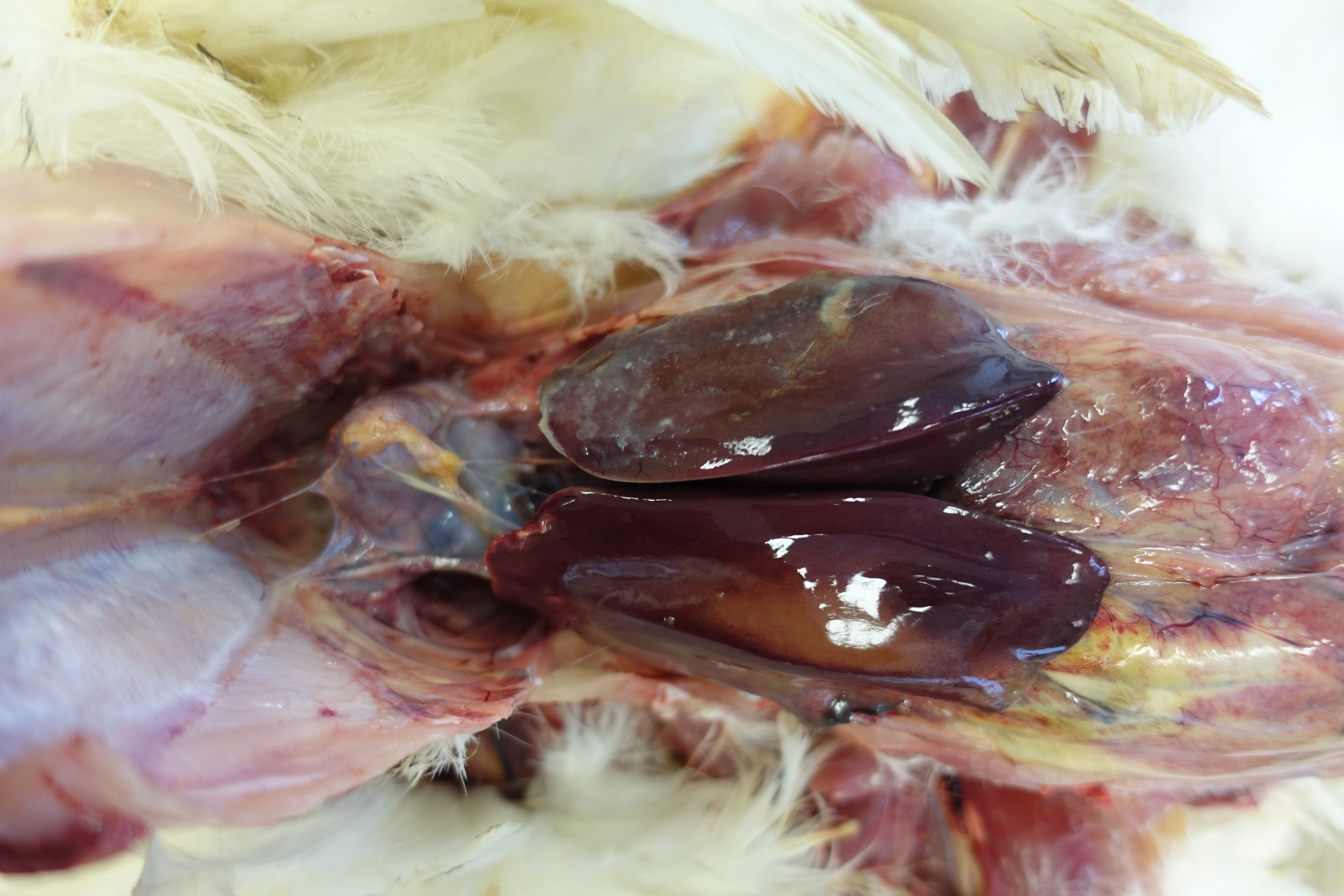11/30/2021:
Peritonitis is still the most common finding in layer mortality. Various factors increase the risk of layers being affected. Examples include climate issues, stress and viral infections, such as the infectious bronchitis virus (IBV). These factors also render layers more susceptible to infection with certain bacteria which may cause peritonitis or sepsis. Each year at GD, we receive somewhere between one hundred and fifty and two hundred layers submitted for pathology because of peritonitis or sepsis. Here we provide a summary of the bacteria cultured from these layers over the past three years. The table does not include incidental findings such as Salmonella Enteritidis and S. Pullorum, which were each found twice over the past three years.

Photo 1. A layer suffering from peritonitis, whereby the membrane around the liver is clearly inflamed (perihepatitis).
Most commonly detected bacteria
In almost 85 percent of the cases, E. coli was detected. This bacteria is also found in virtually all healthy chickens and is normally resident in the intestine. However, if given the opportunity, the bacteria can cause disease. This may occur if a chicken has a compromised immune response or is exposed to extremely high numbers of bacteria, such as in very dusty house air.
Erysipelas and avian cholera
Erysipelothrix rhusiopathiae (the pathogen causing erysipelas) was detected in 6.4 percent and Pasteurella multocida (the pathogen causing avian cholera) was detected in 5.6 percent of the pathological examinations of layers. While such figures seem insignificant, there is often great clinical impact of these pathogens on the flocks in question, particularly in the case of erysipelas. No clear trend has become visible over the years; the diseases seem to occur on a reasonably stable basis. There is however a seasonal effect in the case of erysipelas, whereby the migration of vermin from the field to the houses may play a role in certain seasons.
Our expert Robert Jan Molenaar